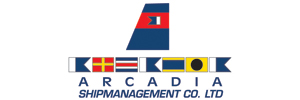INTERCARGO, The Standard Club and DNV GL jointly announced the launch of a new ventilation guide, highlighting the importance of proper ventilation for enhanced safety onboard bulk cargoes and the different ventilation requirements that exist. The guide covers the main aspects on how and when to ventilate to control of humidity and to remove flammable and toxic gases released from cargoes.
In addition, fumigation issues and the entry of ship’s personnel into confined spaces are addressed in the new guide which also sets out the regulatory requirements related to ventilation. Finally, several case studies illustrate practical examples on “what can go wrong when correct ventilation and stowage procedures are not followed.
“Cargo ventilation is an often overlooked, but essential part of avoiding financial risk and danger to the crew and vessel,” said Morten Løvstad, Business Director – Bulk Carriers, at DNV GL – Maritime.
Ed Wroe, Technical Manager at INTERCARGO explained that the guide clearly shows the statutory requirements of cargo and cargo hold ventilation.
Working together, INTERCARGO, DNV GL and The Standard Club were able to provide their own areas of expertise to this publication which I hope will be found to be useful throughout the bulk carrier segment.” Mr Wroe added.
Yves Vandenborn, Director of Loss Prevention, at Standard Club highlighted the importance of complying with ventilation requirements to prevent cargo damage which it will result in large losses
“Ventilating the cargo is not merely allowing the outside air into the cargo hold, but it involves a precise process where a number of factors need to be considered,” he commented.
Also, Capt. Vandenborn said that Standard Club continues to see high numbers of wet cargo damage claims, caused either by fresh water or seawater, but the most serious damage is due to condensation. Inadequate ventilation and poor stowage may result in caked and mouldy dry cargoes, or rusty steel cargoes.
The guide aims to provide a clear and concise understanding of the ventilation requirements for various cargoes and will assist in preventing cargo damage caused by poor ventilation practices on board dry cargo ships,” Vandenborn explained.
When ventilation is needed
Ventilating the cargo is not merely allowing the outside air into the cargo hold; it is a precise process where a number of factors need to be considered. Failing to adhere to correct requirements may cause cargo damage and result in substantial claims.
The decision to ventilate should be taken after considering the following factors:
■ Instructions contained in the charter party or voyage order
■ Temperature, nature and requirements of the cargo
■ Temperature, relative humidity and dew point of air inside and outside the hold
■ Sea temperature, as it may lower the temperature of the hold steel adjacent to or in contact with the sea, resulting in condensation forming on the shell plating (ship sweat)
■ Vent opening should not be exposed to sea spray A review of all of these factors can predict the risk of sweat, and therefore, broadly speaking, it can be decided whether ventilation is necessary or to be prevented.
In general, there are two ventilation rules which the Master should check and confirm when voyage orders are received. If these instructions are at odds with what he would expect for his vessel, he is advised to be prudent and clarify instructions before execution.
The guide explains that a number of cargoes have special ventilation requirements. Broadly, there are two groups of cargo prone to significant risk due to condensation/sweat and these are: Hygroscopic cargoes and Hazardous cargoes.
Click herebelow to read the Cargo and Cargo hold ventilation guide


































































